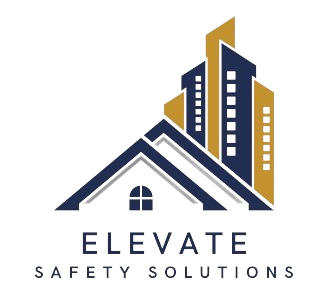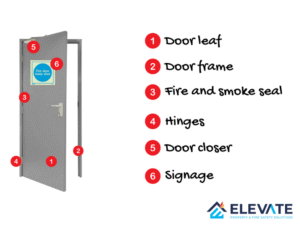Understanding Personal Emergency Evacuation Plans (PEEPs) in the UK
In fire safety, the term PEEP stands for Personal Emergency Evacuation Plan. It’s a tailored plan that ensures individuals who may struggle to evacuate a building in an emergency — such as people with disabilities, mobility issues, or medical conditions — can leave safely.
PEEPs are a vital part of a building’s fire safety strategy and a legal requirement under UK fire safety law.
Who Needs a PEEP?
A PEEP is designed for anyone who cannot be expected to follow a standard evacuation route independently. This includes:
- Wheelchair users
- People with mobility impairments
- Individuals with hearing or vision loss
- People with temporary conditions (e.g., injury, pregnancy)
Staff, residents, or visitors with medical needs
What the Law Says
Under the Regulatory Reform (Fire Safety) Order 2005, the “responsible person” (usually the employer, landlord, or building manager) must ensure that everyone can safely evacuate in an emergency.
This duty includes making reasonable adjustments for people with additional needs. A PEEP is one way to demonstrate compliance.
👉 In high-rise residential buildings, the Fire Safety (England) Regulations 2022 also require responsible persons to collect and maintain information about residents who may need assistance during evacuation.
What Does a PEEP Include?
A Personal Emergency Evacuation Plan typically covers:
- The individual’s needs (mobility, communication, medical, sensory)
- Escape routes (step-free or with assistance)
- Equipment required (evacuation chairs, vibrating alarms, buddy systems)
- Support arrangements (who assists, what training is provided)
- Communication methods (visual alerts, text notifications, or personal notification)
Each PEEP is unique and must be tailored to the person’s specific requirements.
🔄 PEEP vs GEEP
It’s important to distinguish between:
- PEEP (Personal Emergency Evacuation Plan): A bespoke, individual plan for a named person.
- GEEP (Generic Emergency Evacuation Plan): A general plan for groups of people (such as visitors) who may need help but don’t have an individual plan.
Both are essential, but PEEPs are much more detailed and specific.
New Fire Safety Standard: Lifts Can Now Support Emergency Evacuation
Traditionally, lifts were never used in fire evacuations due to safety risks. However, in 2025, the British Standards Institution (BSI) introduced BS EN 81-76:2025, which allows lifts to be safely used in emergency evacuations — including during fires.
This is a major step forward for inclusivity, helping ensure that people with mobility impairments are not left behind.
🔍 What the New Standard Covers:
- Three evacuation modes:
→ Driver-assisted
→ Automatic
→ Remote-assisted - Two lift categories depending on building type:
→ Class A – simpler buildings
→ Class B – complex sites with firefighter access
Works alongside BS EN 81-20 and replaces the outdated DD CEN/TS 81-76:2011.
Why This Matters for PEEPs
With this new standard, lifts can now be integrated into PEEPs. This means:
- Safer, faster evacuation for people with disabilities.
- Reduced reliance on evacuation chairs or manual assistance.
- Building managers must review evacuation strategies to include compliant lifts where available.
👉 In short: PEEPs and modern evacuation lifts now work together to ensure no one is left behind during an emergency.
Why PEEPs Matter
Without a proper evacuation plan, individuals with additional needs may face serious risk during a fire.
PEEPs ensure:
- Safe and timely evacuation for everyone
- Legal compliance under UK fire safety law
- Confidence for staff, residents, and visitors
- Clear responsibilities for support staff or “buddies”
How Elevate Safety Solutions Can Help
At Elevate Safety Solutions, we:
- Carry out fire risk assessments to identify PEEP requirements
- Provide guidance on developing and implementing PEEPs
- Ensure your organisation complies with the latest legislation and standards
- Deliver staff training on evacuation procedures and roles
📧 Email: enquiries@elevatesafetysolutions.co.uk
📞 Call: 07375 846472
🌐 Visit: www.elevatesafetysolutions.co.uk





